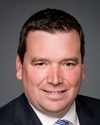Once again we are of course very happy about our record since 2008, because there is a specific tangible benefit in the form of more players and a decrease of an average of 10% in costs.
Now we have an opportunity. We have to keep in mind that the 700 megahertz spectrum is highly valuable, so it is our responsibility as government to make sure it is fully optimized, fully well used, because this spectrum is very effective both in rural areas and in cities. In cities it can go through cement walls. When you go into rural areas, you can have a better cost structure because you need fewer towers to have the spectrum travelling.
The idea here was to make sure we would have four players everywhere in the country. In the cities you can have a good business case, but when you go into the rural areas, there is a possibility that companies could get two blocks, or they can go with partnerships, as is the case with Bell and Telus, for example.
What we decided to do is to put an extra requirement for rural deployment to have a coverage of 90% of the current HSPA footprint within the next five years following the auction, and then after that go up to 97% within the next 10 years following the auction.
What it means is that in the current HSPA footprint we have now, which covers about 98% of Canadian households, these people will have access to LTE technology, the same quality as you see in the cities. This is a huge impact.
When we speak about better technology, better quality, this is it. I addressed better prices; the other option is more choices. The question is having a fourth player in all areas.
After that we can go beyond that, addressing the 2,500 megahertz spectrum. This spectrum is very valuable too. It can be very effective. It can be used in remote areas. There are some companies operating with satellites, for example. They know how to use the spectrum and there is an opportunity for them to deploy that.
Some companies can find niche markets where other companies might not, but down the road you have good diversity. We can hope that we will be able to deploy network coverage as widely as possible.

